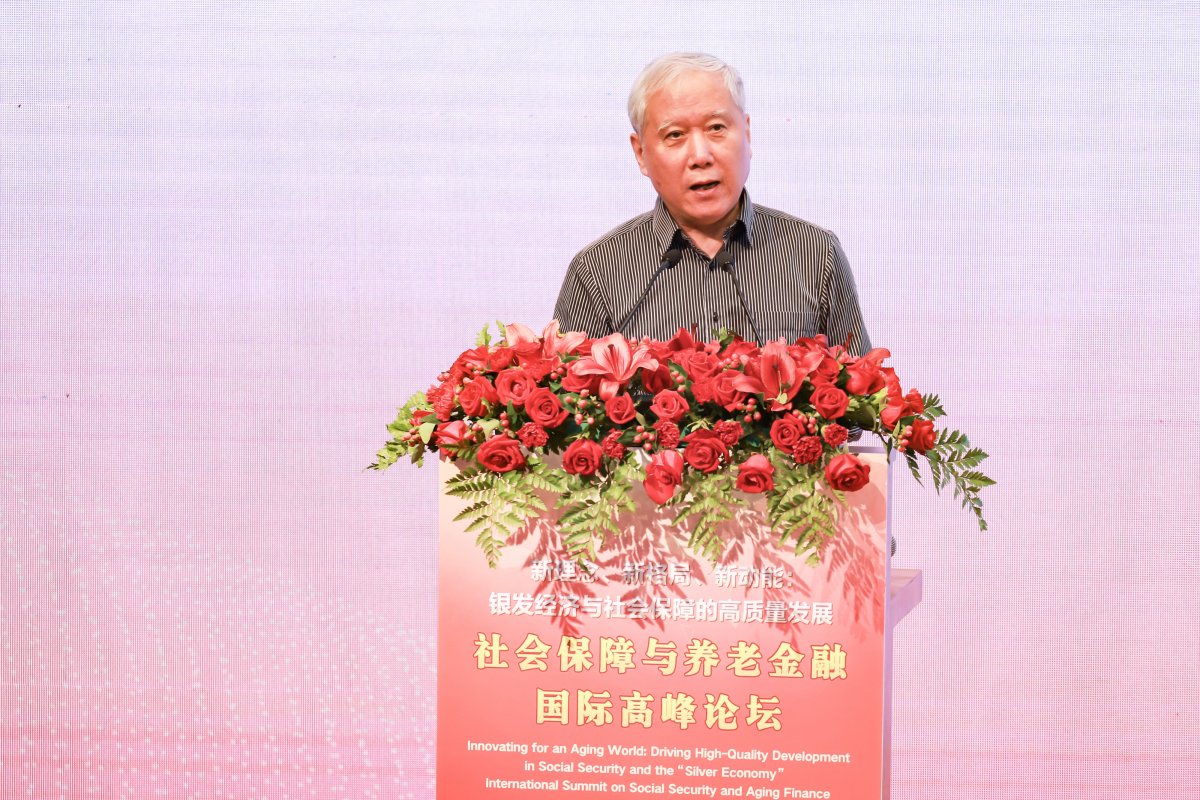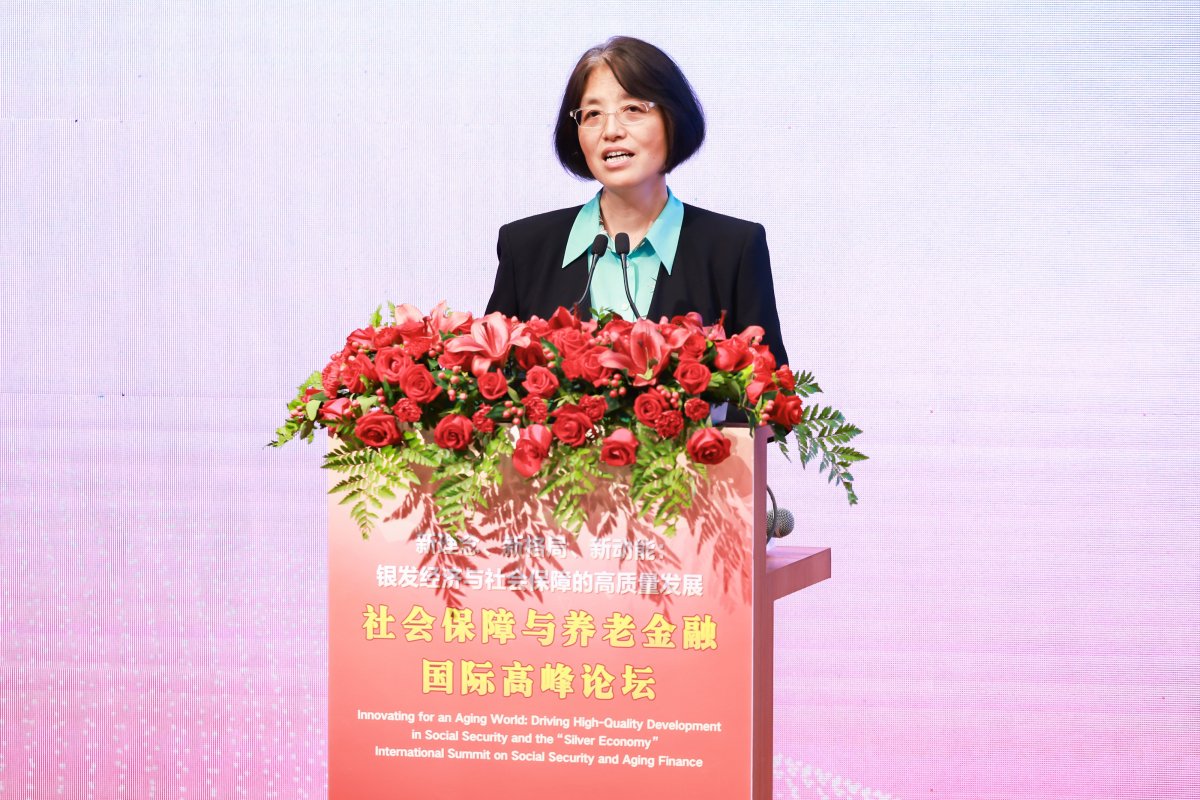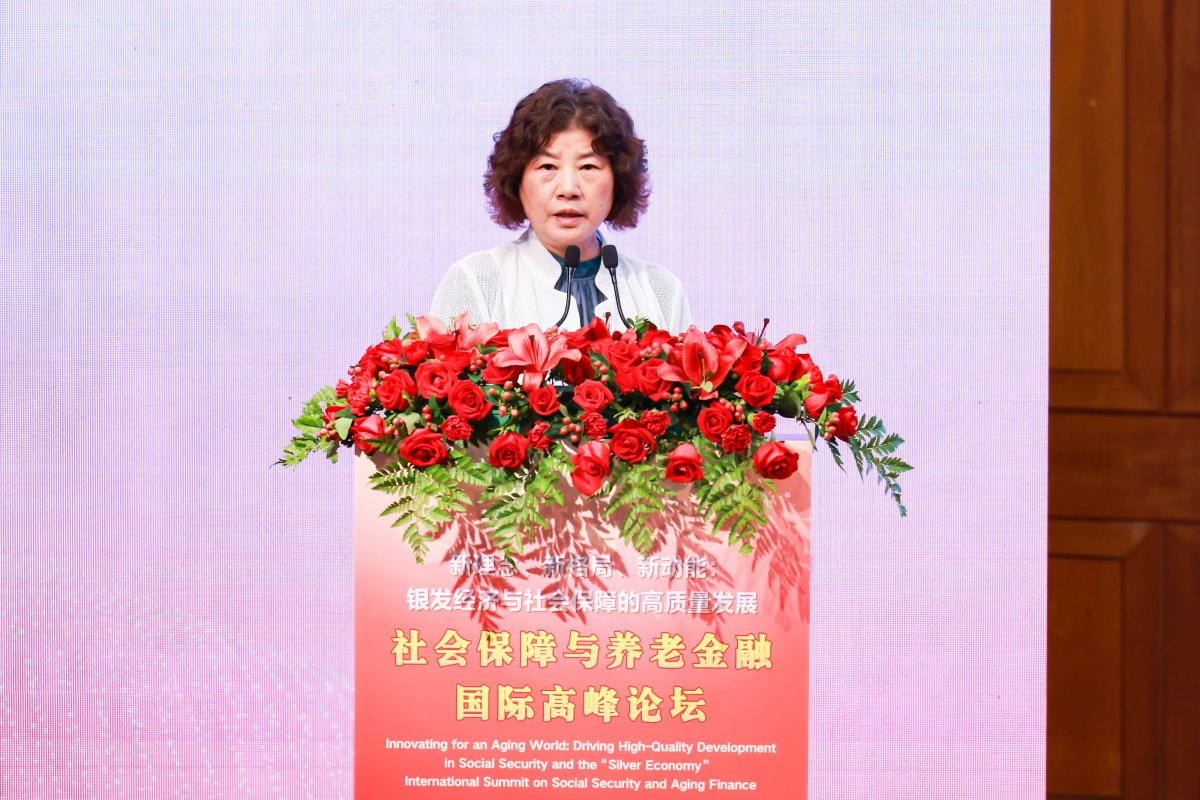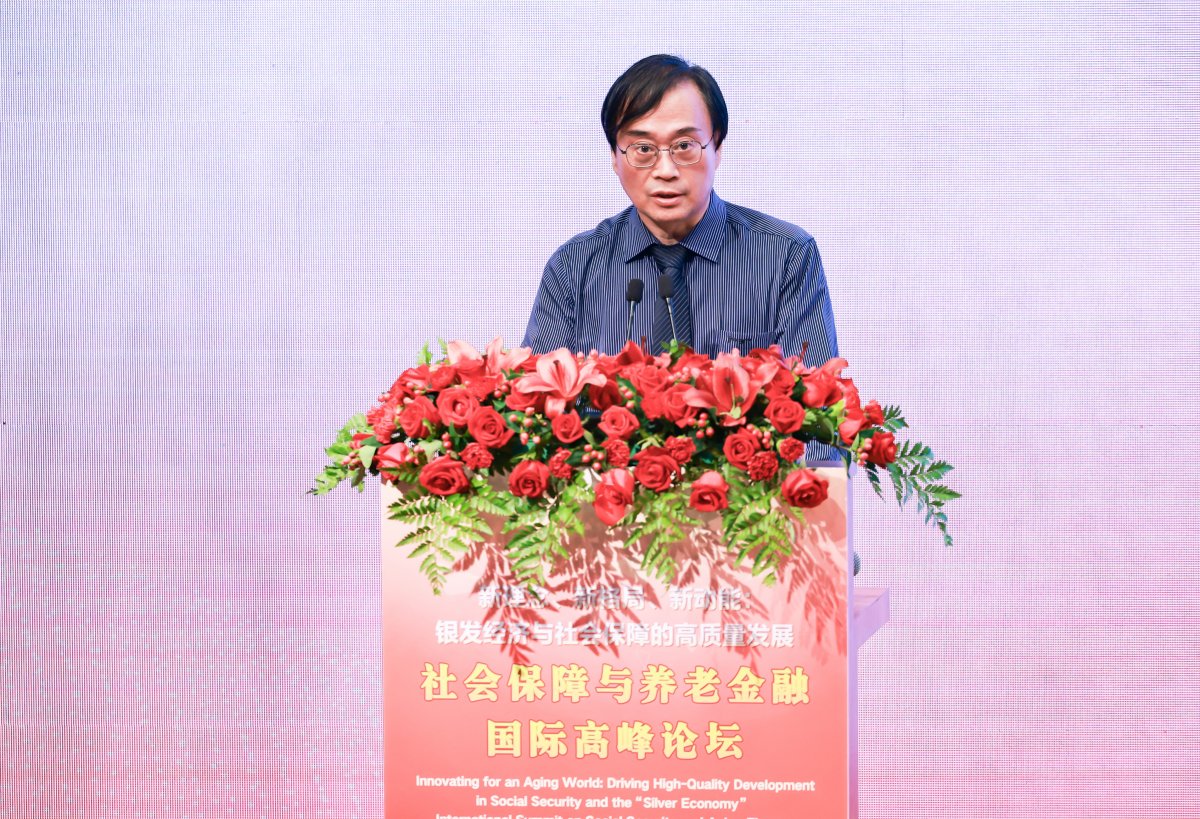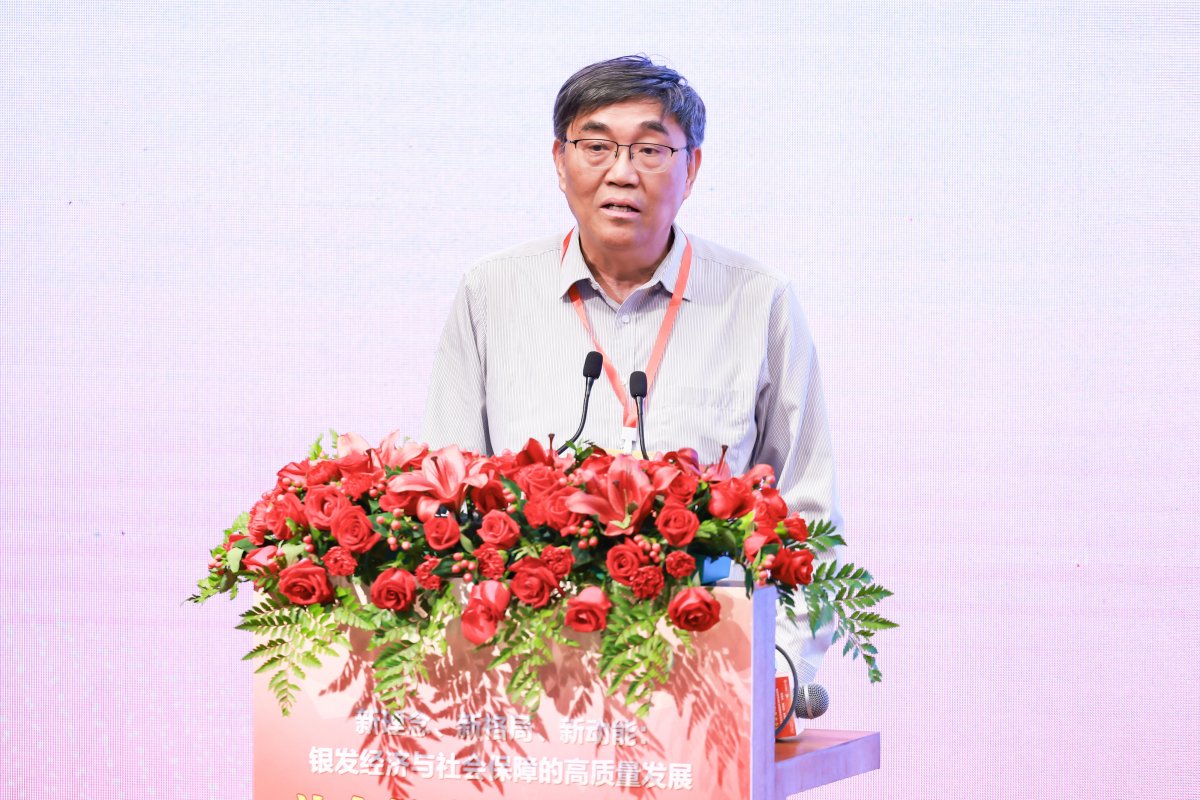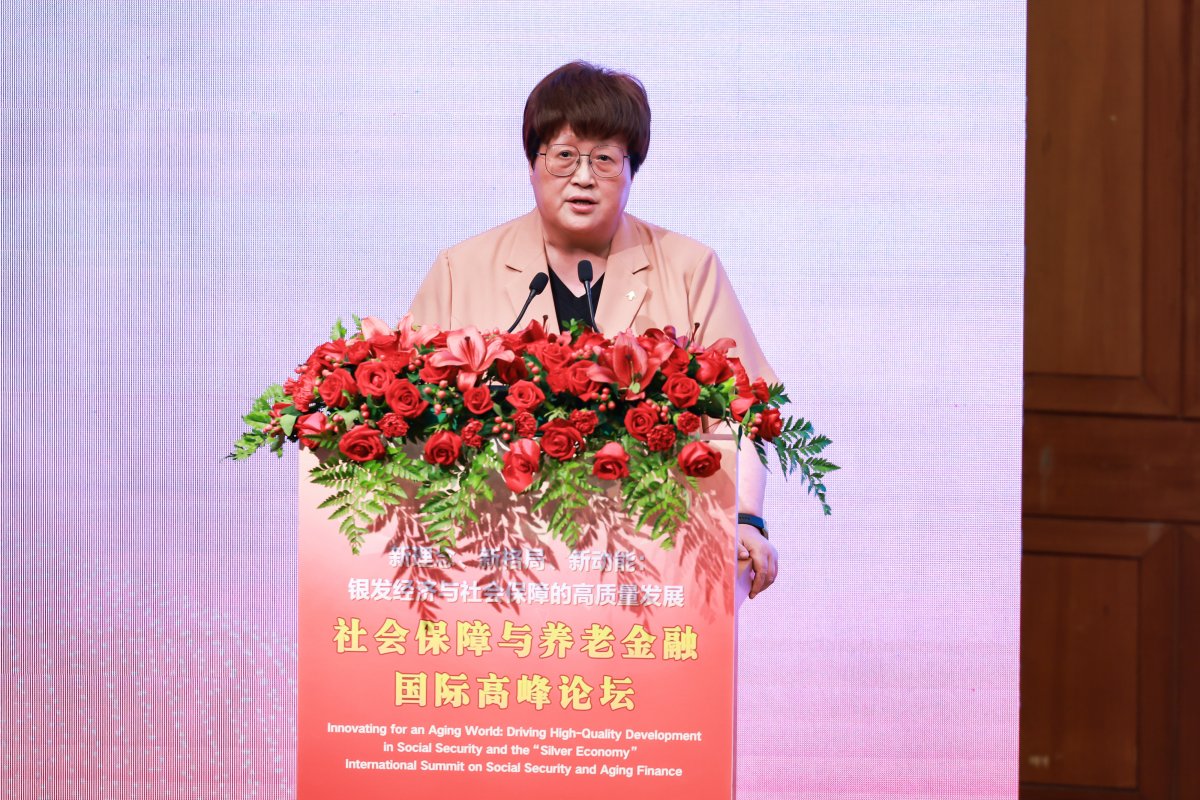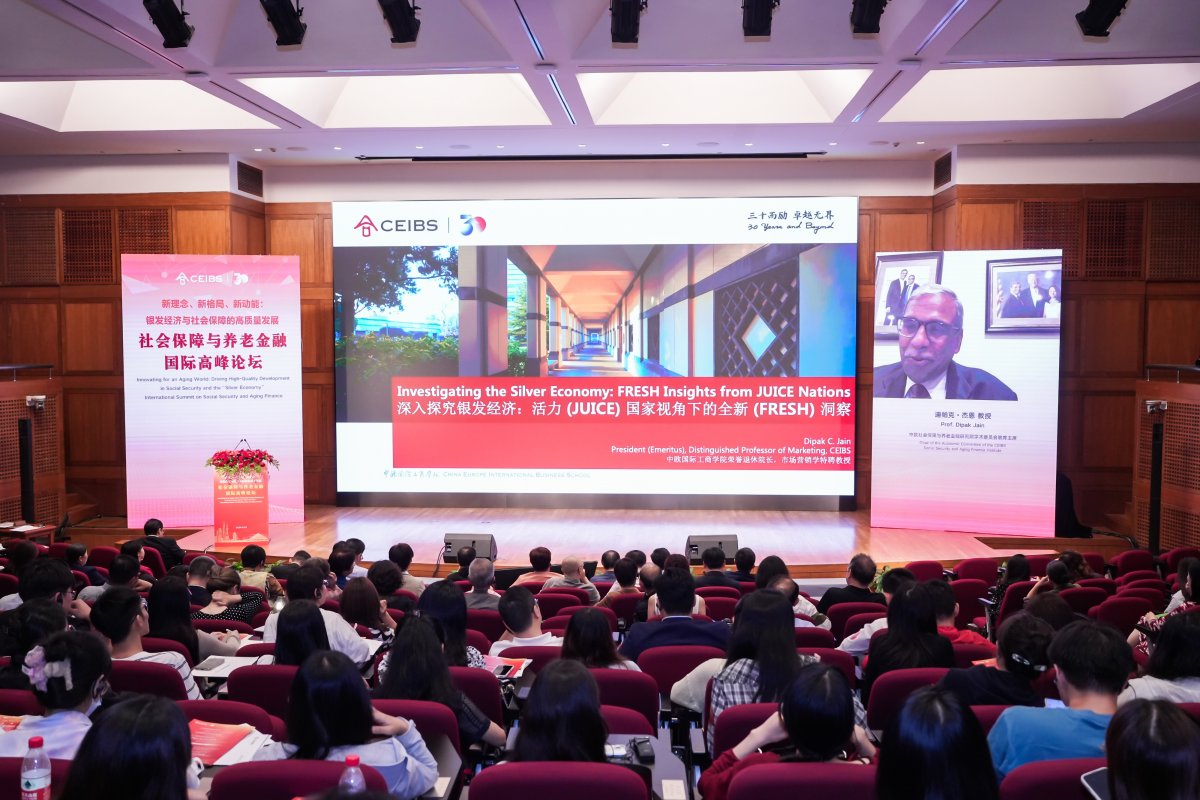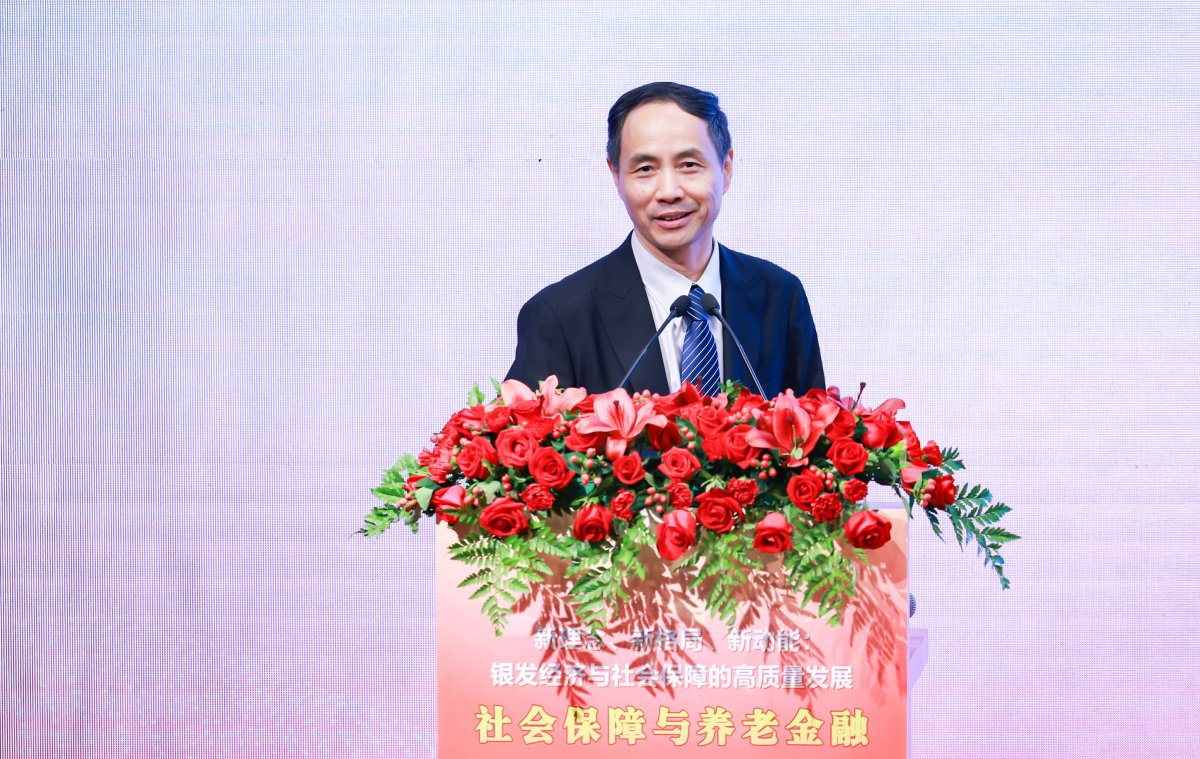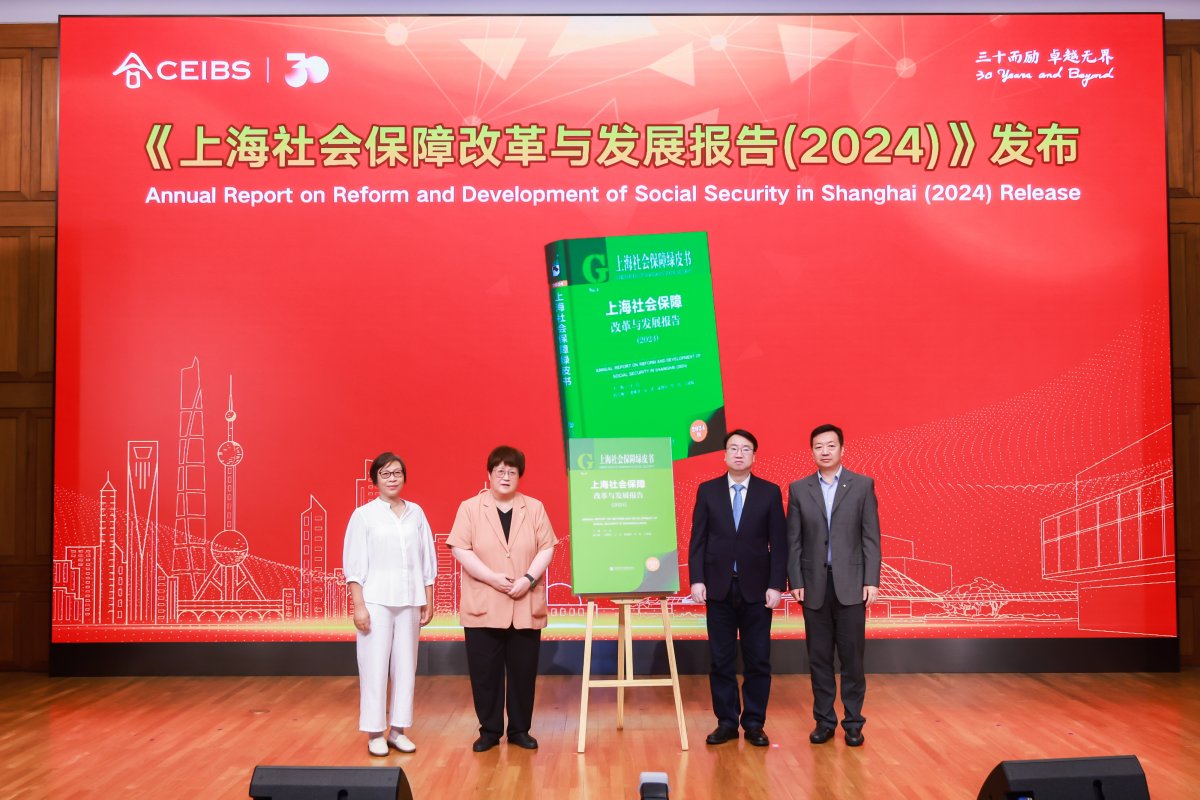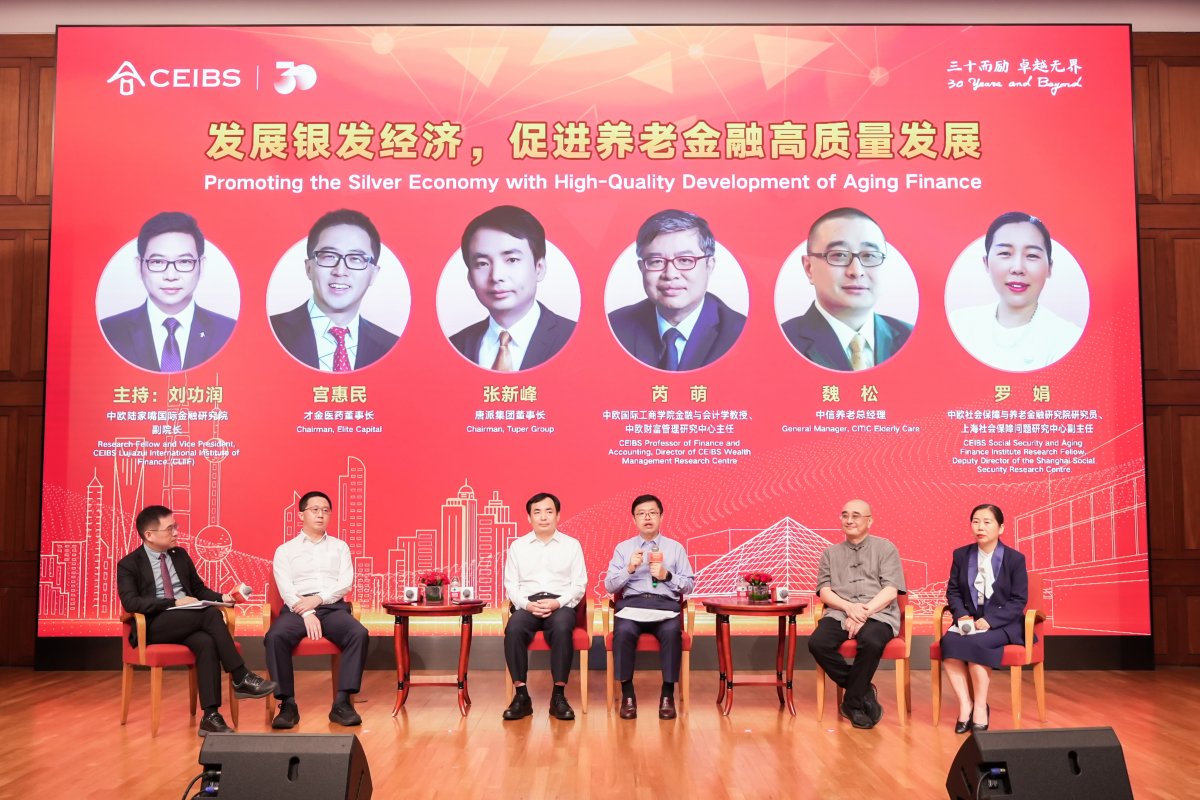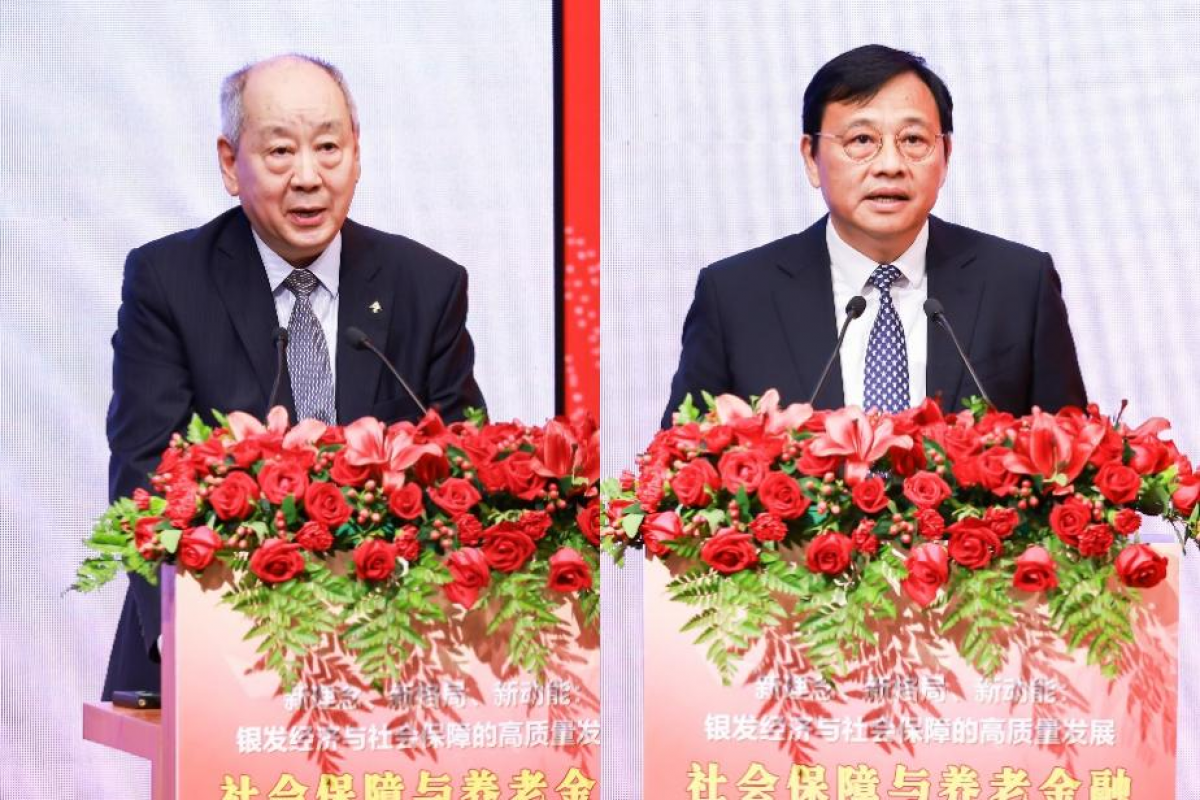CEIBS hosts 2024 International Summit on Social Security and Aging Finance
September 29, 2024. Shanghai – The CEIBS International Summit on Social Security and Aging Finance was held at the school’s Shanghai campus today, with numerous distinguished speakers and experts in the field gathering to share their insights and latest research findings under the theme of “Innovating for an Aging World: Driving High-Quality Development in Social Security and the ‘Silver Economy’.”
As the population ages, social security and pension finance can together create a stable foundation for an aging society. At the same time, they bring new challenges for high-quality development in a new economic era: specifically, how can country’s improve their structure, enhance coordination, increase overall funding, expand coverage, and ensure the sustainability of pension systems?
Hosted by CEIBS and the Academic Committee of CEIBS Social Security and Aging Finance Institute, this important summit also functioned as one of several events this year to mark the 30th anniversary of the school.
In his keynote speech, Secretary-General of Tsinghua PBCSF Pension Finance 50 Forum Dong Keyong highlighted the three key characteristics of China's aging population: First, the total population has been declining since 2021, and this trend is unlikely to reverse; Second, the number and proportion of individuals aged 65 and beyond will potentially rise to 35% over the next 30 years; Third, the high proportion of elderly individuals will persist until the end of this century. These factors pose significant challenges to China's pension system.
Therefore, he continued, the need to establish a multi-pillar pension system has become a shared consensus, aiming to ensure the sustainable development of the pension system through shared responsibilities among the government, employers, and individuals.
In her speech under the theme of “Silver Economy and the Chinese Social Security System”, Director of the Centre for Health and Development Studies of Peking University Li Ling stated that to respond to national strategies regarding an aging population, China should tap into its aging human resources and vigorously develop the silver economy.
She also suggested the development of various sectors of the silver economy, including elderly housing, pension finance, elderly care services, and production and services of senior-related products and equipment, as well as digitalisation and smart technologies for elderly care.
She then highlighted the importance of exploring integrated healthcare and elderly care models that align with Chinese lifestyles. “The first priority of the Chinese approach to elderly care is ensuring that seniors remain active and engaged, followed by providing them with proper support and care. The ideal is for them to lead fulfilling lives, cultivate their well-being, and pass away peacefully without illness,” she said.
In following remarks, Academician of the Chinese Academy of Engineering, Director of the Institute for Proactive Healthcare of Shanghai Jiao Tong University (SJTU) and Chair Professor of SJTU Jia Weiping, drawing on her decades of clinical experience as a medical scientist, explained how to address increasing functional decline and chronic diseases among the elderly in aging societies, while also outlining strategies for elderly health management.
She emphasised that elderly health management is a complex system requiring collaboration across multiple sectors. At the national level, efforts should be made on improving guidelines, policies, and creating supportive environments, while raising public awareness of health. At the industry level, the healthcare sector should continuously study the mechanisms of aging-related diseases and develop new technologies and methods to better serve the elderly.
Jin Weigang, Vice President of the China Association of Social Security, and Vice President of State System Research of Zhejiang University then explored ways to enhance high-quality pension finance through a multi-tiered pension system.
Peng Xizhe, President of Fudan Institute on Aging shared the four main characteristics of the silver economy while analysing future development trends. He pointed out that the development and scale of the silver economy first depend on the growth of the elderly population, followed by their consumption demand, spending power, and behaviour, and finally the investment from the government and society in the well-being of the elderly population.
“Reforms in social security systems, particularly in pensions and long-term care insurance, will become crucial in driving the growth of the silver economy,” he said, adding that the development of the silver economy requires more systematic policies and industry advancement. The greater challenge lies in how to convert the money or fixed assets that elderly people possess into consumable capacity through various financial means, which is also a crucial part of stimulating the silver economy.
During her keynote speech, CEIBS President and Chair of the Academic Committee of CEIBS Social Security and Aging Finance Institute Wang Hong analysed the current state of global aging and the subsequent challenges, while suggesting a new model of Chinese pension and a new concept of "healthy aging".
She stated that the need for healthy aging has become a global consensus, and addressing the needs for care, support, learning opportunities, and enjoyment in old age are key to responding to aging populations. She added that the silver economy is characterised by a large population base, broad consumer demand, high initial investment with long return cycles, and extensive industry involvement with a long supply chain.
She also identified eight key areas for developing the silver economy, namely, optimising multi-tiered security systems, developing high-quality healthcare services, enhancing institutional and community-based elderly care, technological development of the elderly care industry, expanding the senior consumer market, developing intelligent cultural and recreational tourism, pension finance, and urban and rural renovation for the elderly.
“In the future, we should set our eyes on these eight key areas, enhance policy support for the aging industry, promote industry regulation, raise public awareness about elderly care, improve the entire industry chain of the aging industry, and promote collaboration among government, society, businesses, and individuals to provide the elderly with intelligent, safe, and aging-friendly lives,” President Wang said.
Meanwhile, CEIBS Professor of Finance and Accounting and Director of CEIBS Wealth Management Research Centre Oliver Rui pointed out China’s silver economy demonstrates vast development potential with a scale of RM 7 trillion, accounting for 6% of the country’s GDP, and is expected to grow to RMB 30 trillion by 2035.
Addressing the complexities of China’s aging population, Prof. Rui emphasised the importance of pension finance, and put forward three initiatives for its development, including improving pension financial products and services, optimising individual pension accounts, and diversifying financing for the elderly industry.
In a speech under the theme of “Investigating the Silver Economy: FRESH Insights from JUICE Nations”, CEIBS Distinguished Professor of Marketing and Co-chair of the Academic Committee of the CEIBS Social Security and Aging Finance Institute Dipak Jain examined Fertility, Retirement, Education, Stability, and Healthcare (FRESH) perspectives from Japan, USA, India, China and Europe (JUICE), whose populations cumulatively make up 50% of the world’s total.
He then highlighted the five areas that JUICE countries should focus on, including increasing fertility rates, engaging the “silver population”, improving the quality of K-12 education standards, prioritising human talent, and promoting healthy living.
In discussing the opportunities presented by the silver economy, Prof. Jain highlighted the role of age-friendly wellness (healthcare and wealth care), age-friendly engagement (digital media and entertainment), and age-friendly hospitality (tourism, travel, hotels and restaurants).
“The silver segment is a future diamond,” Prof. Jain said, calling for joint efforts to tap into their wisdom and resources to contribute to society.
Dong Dengxin, Director of the Institute of Finance and Securities at Wuhan University of Science and Technology, and Core Member of CAFF 50, explained how five types of finance - technology finance, green finance, digital finance, inclusive finance, and pension finance - can drive the silver economy.
“Pension finance will be a key focus for the financial industry, playing a dual role in both the financial sector and the silver economy,” he concluded.
In addition to keynote speeches, the summit also featured the launch ceremony of the Shanghai Social Security Reform and Development Green Book 2024, as well as the release of current research findings from the CEIBS Social Security and Aging Finance Institute.
The event concluded with a roundtable discussion moderated by Vice Chairman of CEIBS Lujiazui International Institute of Finance Liu Gongrun and featuring Professor of Finance and Accounting Oliver Rui as well as four other experts in the field of aging finance and social security on the theme of “Promoting the Silver Economy with High-Quality Development of Aging Finance.”
The event was hosted by the Vice President of Academic Committee of CEIBS Social Security and Aging Finance Institute, Deputy Party Secretary of Shanghai University of Engineering Science, and Deputy Director of Shanghai Social Security Research Centre Shi Jianyong. CIEBS Vice President and Co-Dean Zhang Weijiong made a welcome address.
Founded in 2022, the CEIBS Social Security and Aging Finance Institute serves as a global academic network and exchange platform with industry experts, policymakers, international think tanks, and entrepreneurs in social security from China and abroad gathering to promote sustainable, high-quality economic and social development through academic and public policy research. It aims to create a globally influential research platform and think tank.







